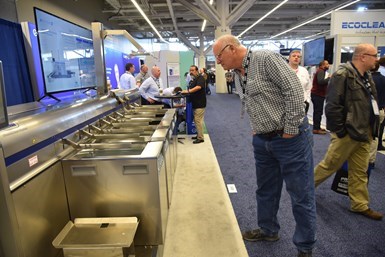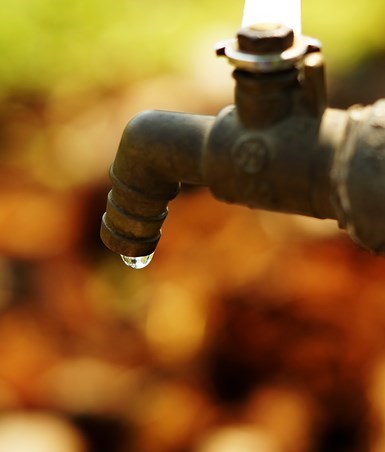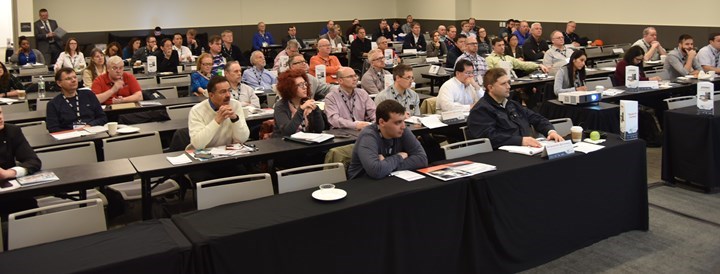2021 PMTS Parts Cleaning Exhibitors Help Determine ‘How Clean is Clean’
Taking advantage of trade shows and conferences geared toward parts cleaning processes, best practices and technologies, such as PMTS, is a great way to become educated about parts cleaning for your company.
If you or someone in your company is learning to navigate meeting stricter parts cleanliness standards required by your customers, you are not alone. With the COVID-19 pandemic forcing some companies to reorganize their staff, some industry professionals are faced with the challenges of comprehending their new positions, one of which might be heading up the parts cleaning department. It can leave them feeling overwhelmed and confused about cleaning regulations, measuring cleanliness for customer specifications and attempting to answer the question, “How clean is clean?”

Cleaning specifications are one of the important conversations currently in the industry. There are many new professionals in the cleaning arena who are learning the ins and outs of specs and much more.
With the help of cleaning experts who represent OEMs and solvent manufacturers, these concerns and more can be easily addressed. While it is critical to direct questions to professionals at your facility who are already involved in the cleaning process, it is also beneficial to take advantage of trade shows and conferences that are geared toward parts cleaning processes, best practices and technologies. The Precision Machining Technology Show (PMTS) is one such trade show that offers exclusive coverage of the parts cleaning industry through its cleaning exhibits as well as the Parts Cleaning Conference which coincides with PMTS. This year, the show will be held at the Huntington Convention Center of Cleveland in Cleveland, Ohio, Aug. 10-12. (Visit pmts.com for more information and to register to attend.)
To understand current industry trends and the important conversations involving parts cleaning that will likely be reflected at PMTS’ cleaning exhibits, I spoke with several professionals in the cleaning sector whose companies will be exhibiting at PMTS this year.
They noted that there are many questions out there about specifications — what they are and how to reach them — as well as measuring cleanliness, environmental concerns, cleaning multiple metal parts in one process, faster cycle times and automation.
Specification? What’s That?
Although cleaning specifications are familiar to many cleaning departments, those that are just beginning their parts cleanliness journey might not be so well versed.
For instance, because many workers are finding themselves taking on these new cleaning roles, they might often not be aware of the specifications their customers must reach, or even how to define a specification.

PMTS offers parts cleaning equipment exhibitors a dedicated section on the show floor to display their latest technologies and processes.
Lately, Jeff Mills, vice president, Ransohoff sales at Cleaning Technologies Group (CTG), encounters many people responsible for parts cleaning in their facilities who are inexperienced. Therefore, he regularly finds himself explaining ISO specifications or Ford or GM specifications to those companies’ suppliers. “We are constantly re-educating people,” he says. “And many don’t understand which cleaning processes are necessary to reach a specification.”
On the other hand, there are non-automotive suppliers that are aware specifications are important, but they are only recently incorporating them into their production, according to Don Reeder, vice president of sales and marketing at Sugino Corp. So, they have lots of questions about how to reach those specifications using their existing equipment.
Aaron English, marketing manager – industrial at BHC, says he is finding the cleaning processes within organizations are often managed by someone responsible for multiple areas, and cleaning is rarely their priority. “That person may not have the time to devote to staying current with the technology shift in the industrial cleaning space,” he explains. “Customers are trying to determine ‘How clean is clean enough?’ and how cleaning requirements can or will affect processes that are already in place.”
Also, many companies are navigating the unknown territory of moving from visual cleanliness inspection to formal measuring of part cleanliness. “This is where we educate them on how to specify ‘How clean is clean’,” according to Mills. “We guide them by asking them questions about what happens after they wash the parts. What are you doing with them? Are you putting pieces together? Are you putting them in a box and shipping them somewhere? We try to get to know their processes.”
CTG has also been using a surface analyst from BTG Labs as its standard method of determining how clean is clean for its customers. Mills says the device shows users which parts are clean and which ones are not and to what degree, he explains. “The device has been successful with our customers.”
Environmental Concerns
While the U.S. Environmental Protection Agency (EPA) is in the process of evaluating several solvents used in parts cleaning processes for user safety, environmental concerns are on the rise among facilities implementing parts cleaning equipment.

Environmental concerns are becoming more common for users of parts cleaning equipment. Companies are looking for less water or no water cleaning applications as greener cleaning alternatives.
Also, in some areas of the world, environmental resources such as water are scarce. Therefore, suppliers such as Cool Clean Technologies, which specializes in carbon dioxide (CO2) technology for precision cleaning applications, aims to replace chemicals and water waste processes. “CO2 cleaning is a ‘dry’ cleaning solution, meaning there is no energy-intensive drying process after the cleaning step,” says Jon Wikstrom, president at Cool Clean Technologies.
Another process that supports this trend is vacuum degreasing with modified alcohol and hydrocarbon, which requires no incoming water or wastewater discharge and protects workers from exposure to chemicals. According to Chuck Sexton, global product line manager, industrial at Kyzen Corp., the process is excellent for cleaning a range of machined parts to meet increasing cleanliness specifications.
Untended Processes
COVID-19 magnified the manufacturing’s growing lack of skilled labor by forcing some workers into retirement or causing facilities to become short-staffed because of illness. This has furthered the need to automate cleaning processes for many manufacturers.
“We are seeing more robots, gantry systems and pick-and-place operations, even in low-cost labor countries like Mexico and China,” says Reeder at Sugino. “It is catching on at a much faster pace than before.”

Cool Clean Technologies’ CO2-based cleaning systems aim to replace chemicals and water waste processes by using a “dry” cleaning solution.
Wikstrom says Cool Clean is also receiving many questions about equipment automation from its customers. He says CO2 cleaning is easily automated because the source is recycled CO2 and the supply is highly available. Automation is critical, he adds, because it helps deliver consistent cleaning results, enabling facilities to optimize their operations.
“Whether using automated conveyors or full robotic cleaning cells, parts are being cleaned more efficiently and precisely,” he adds.
More Trends
Other current trends in the manufacturing cleaning industry include tailored cleaning for specific applications, cleaning multiple-metal parts in the same aqueous process, and parts cleaning for remanufacturing.
According to Wikstrom, operators are asking for the ability to adjust cleaning parameters to match the specific size and geometry of parts. Instead of requiring a cleaning solution as a one-size-fits-all, the push is for tailored cleaning for a specific part and process to improve cleanliness standards.
Industry trends are often driven by efficiency, which is no exception for the current parts cleaning climate. For example, cleaning multiple-metal parts, such as aluminum and steel, in the same aqueous cleaning process is a growing need seen by Sexton at Kyzen. He explains that it is sometimes not practical to separate aluminum from steel. Therefore, the cleaning chemistry
needs to be compatible with and provide long-term corrosion protection for both metals. “This new technology greatly improves process efficiency and costs,” he explains.
Remanufacturing is providing new opportunities for parts cleaning as well, Sexton says. He explains that new aqueous cleaning chemistries have greatly improved removal of burned-on carbon and removal of oxides from both aluminum and steel.
Other questions Sexton says are common include: “What is the best process for cleaning baskets of very small parts?” and “Can we use one chemical product for both cleaning and corrosion protection?”
A Unique Trade Show
The precision machining niche that PMTS focuses on and the manageable scale of the show makes it unique for attendees who are interested in learning more about cleaning. Also, as shops increasingly add capabilities, such as cleaning to satisfy customers’ needs, attendees will find it convenient that cleaning exhibitors are interspersed with the precision machining exhibitors.

This year’s Parts Cleaning Conference features presentations from Ecoclean, Jomesa North America and Hubbard-Hall, to name only a few of the 20 companies represented at this educational event.
PMTS also offers the Parts Cleaning Conference during the show, which provides a valuable opportunity for cleaning professionals to learn from experts who present on topics such as particle analysis, cleaning inspection, cleaning parts after thermal deburring, understanding how heat improves a cleaning process, passivation and more.
According to returning exhibitors, attendees who have visited their booths at past shows are the decision-makers of their companies and the people responsible for their cleaning processes. They are serious about buying solutions for their cleaning problems. They also say the show helps them build long-term relationships because of the networking opportunities it presents.
“PMTS is one of the best industrial shows that we do,” Sexton says. “It is very good for both prospective customer leads and partner networking.”
The show’s venue – Huntington Convention Center of Cleveland – has also received positive feedback from show attendees and exhibitors since its switch from its previous Columbus, Ohio, venue.
“It’s tremendously better,” Mills says of the venue. “I think the Cleveland area pulls a lot more attendees from the manufacturing sector than Columbus did.”
Read Next
Episode 45: An Interview with Chandler Mancuso, MacDermid Envio Solutions
Chandler Mancuso, technical director with MacDermid Envio discusses updating your wastewater treatment system and implementing materials recycling solutions to increase efficiencies, control costs and reduce environmental impact.
Read MoreEducation Bringing Cleaning to Machining
Debuting new speakers and cleaning technology content during this half-day workshop co-located with IMTS 2024.
Read MoreA ‘Clean’ Agenda Offers Unique Presentations in Chicago
The 2024 Parts Cleaning Conference, co-located with the International Manufacturing Technology Show, includes presentations by several speakers who are new to the conference and topics that have not been covered in past editions of this event.
Read More


















